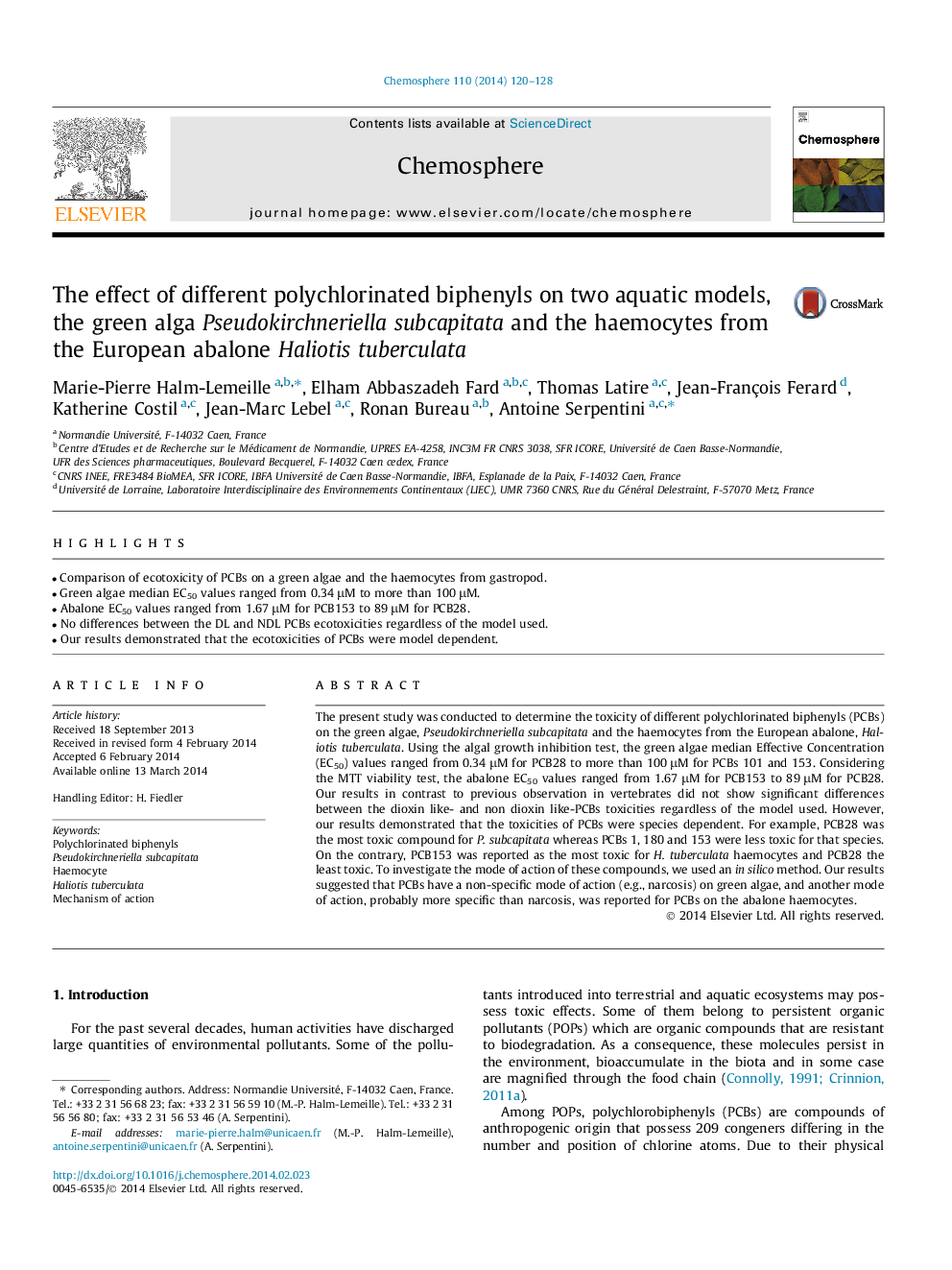| Article ID | Journal | Published Year | Pages | File Type |
|---|---|---|---|---|
| 4408740 | Chemosphere | 2014 | 9 Pages |
•Comparison of ecotoxicity of PCBs on a green algae and the haemocytes from gastropod.•Green algae median EC50 values ranged from 0.34 μM to more than 100 μM.•Abalone EC50 values ranged from 1.67 μM for PCB153 to 89 μM for PCB28.•No differences between the DL and NDL PCBs ecotoxicities regardless of the model used.•Our results demonstrated that the ecotoxicities of PCBs were model dependent.
The present study was conducted to determine the toxicity of different polychlorinated biphenyls (PCBs) on the green algae, Pseudokirchneriella subcapitata and the haemocytes from the European abalone, Haliotis tuberculata. Using the algal growth inhibition test, the green algae median Effective Concentration (EC50) values ranged from 0.34 μM for PCB28 to more than 100 μM for PCBs 101 and 153. Considering the MTT viability test, the abalone EC50 values ranged from 1.67 μM for PCB153 to 89 μM for PCB28. Our results in contrast to previous observation in vertebrates did not show significant differences between the dioxin like- and non dioxin like-PCBs toxicities regardless of the model used. However, our results demonstrated that the toxicities of PCBs were species dependent. For example, PCB28 was the most toxic compound for P. subcapitata whereas PCBs 1, 180 and 153 were less toxic for that species. On the contrary, PCB153 was reported as the most toxic for H. tuberculata haemocytes and PCB28 the least toxic. To investigate the mode of action of these compounds, we used an in silico method. Our results suggested that PCBs have a non-specific mode of action (e.g., narcosis) on green algae, and another mode of action, probably more specific than narcosis, was reported for PCBs on the abalone haemocytes.
